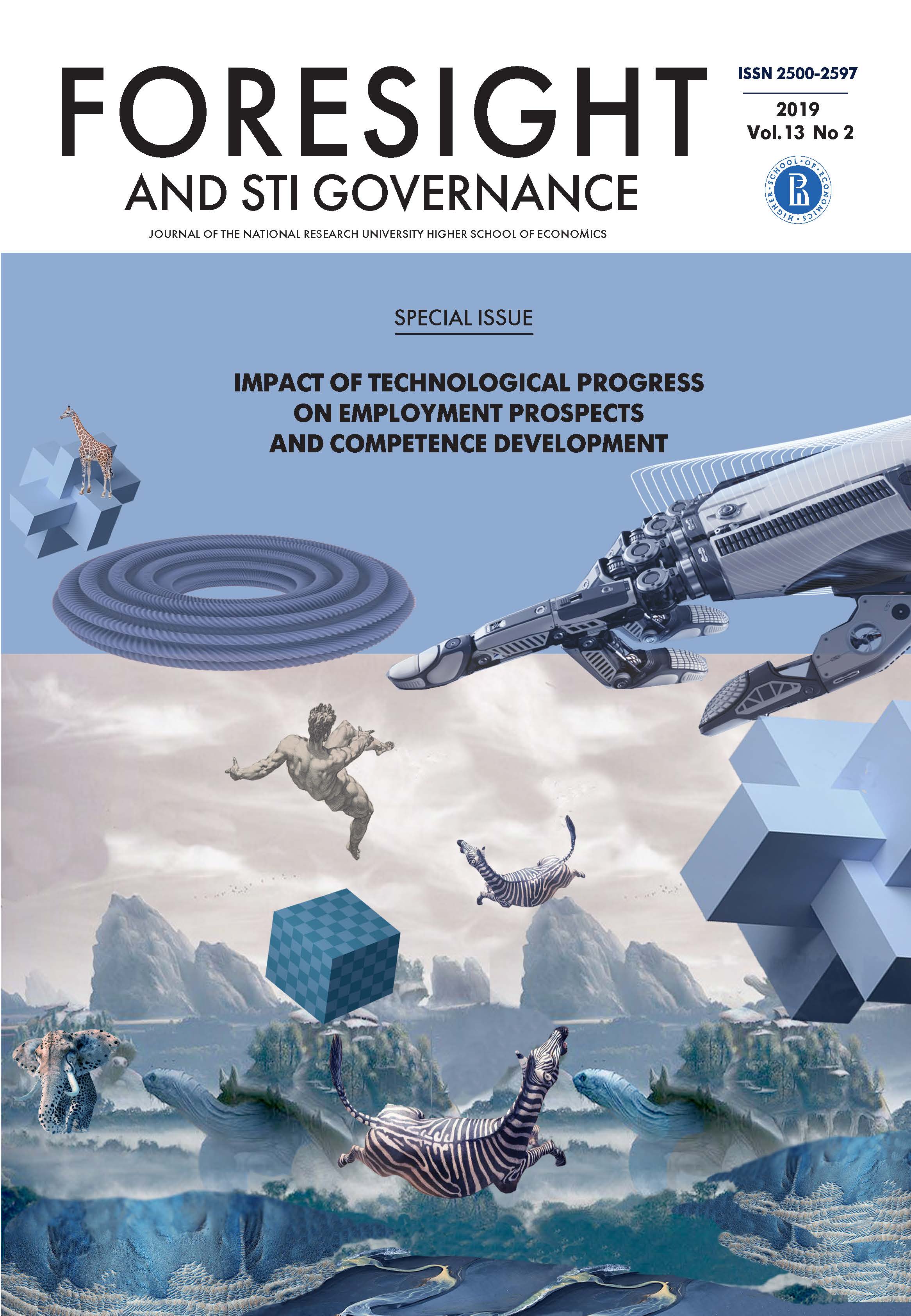Abstract
We investigate the impact of new digital technologies upon occupations. We argue that these impacts may be both destructive and transformative. The destructive effects of digitalization substitute human labor, while transformative effects of digitalization complement it. We distinguish between four broad groups of occupations that differ with regard to the impact of digitalization upon them. “Rising star” occupations are characterized by the low destructive and high transformative effects of digitalization. In contrast, “collapsing” occupations face a high risk of destructive effects. “Human terrain” occupations have low risks of both destructive and transformative digitalization, whereas “machine terrain” occupations are affected by both types. We analyze the differences between these four occupational groups in terms of the capabilities, which can be considered bottlenecks to computerization. The results help to identify which capabilities will be in demand and to what degree workers with different abilities can expect their occupations to be transformed in the digital era.
References
Acemoglu D., Restrepo P. (2019) The Wrong Kind of AI? Artificial Intelligence and the Future of Labor Demand. IZA Discussion Paper 12292. Bonn: Institute of Labor Economics.
Arntz M., Gregory T., Zierahn U. (2017) Revisiting the Risk of Automation // Economics Letters. Vol. 159. P. 157-160.
Autor D.H. (2015) Why Are There Still So Many Jobs? The History and Future of Workplace Automation // Journal of Economic Perspectives. Vol. 29. № 3. P. 3-30.
Brynjolfsson E., McAfee A. (2014) The Second Machine Age: Work, Progress, and Prosperity in a Time of Brilliant Technologies (1st ed.). New York: W. W. Norton & Company.
Brynjolfsson E., Mitchell T., Rock D. (2018) What Can Machines Learn and What Does It Mean for Occupations and the Economy? // American Economic Association Papers and Proceedings. Vol. 108. P. 43-47.
Chang J.-H., Huynh P. (2016) ASEAN in Transformation: The Future of Jobs at Risk of Automation. Bureau for Employers’ Activities Working Paper № 9. Geneva: International Labour Organization.
Felten E.W., Raj M., Seamans R. (2018) A Method to Link Advances in Artificial Intelligence to Occupational Abilities // American Economic Association Papers and Proceedings. Vol. 108. P. 54-57.
Fossen F.M., Sorgner A. (2019) New Digital Technologies and Heterogeneous Employment and Wage Dynamics in the United States: Evidence from Individual-level Data. IZA Discussion Paper 12242. Bonn: Institute of Labor Economics.
Frey C.B., Osborne M.A. (2017) The Future of Employment: How Susceptible Are Jobs to Computerization? // Technological Forecasting and Social Change. Vol. 114. P. 254-280.
Manyika J., Lund S., Chui M., Bughin J., Woetzel J., Batra P., Ko R., Sanghvi S. (2017) Jobs Lost, Jobs Gained: Workforce Transitions in a Time of Automation. New York: McKinsey Global Institute.
Sorgner A., Bode E., Krieger-Boden C. (2017) The Effects of Digitalization on Gender Equality in the G20 Economies (E-book). Kiel: Kiel Institute for the World Economy. Режим доступа: https://www.ifw-kiel.de/pub/e-books/digital_women-final_report.pdf, дата обращения 25.04.2019.
Зоргнер А. (2017) Автоматизация рабочих мест: угроза для занятости или источник предпринимательских возможностей? // Форсайт. Т. 11. № 3. С. 37-48. DOI: https://doi.org/10.17323/2500-2597.2017.3.37.48

This work is licensed under a Creative Commons Attribution 4.0 International License.

